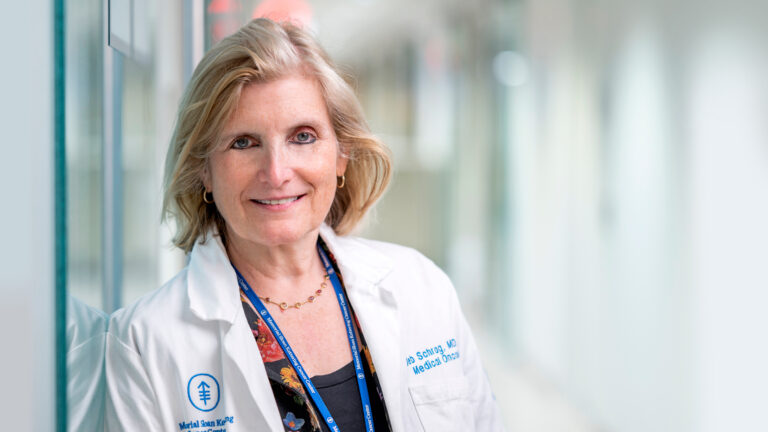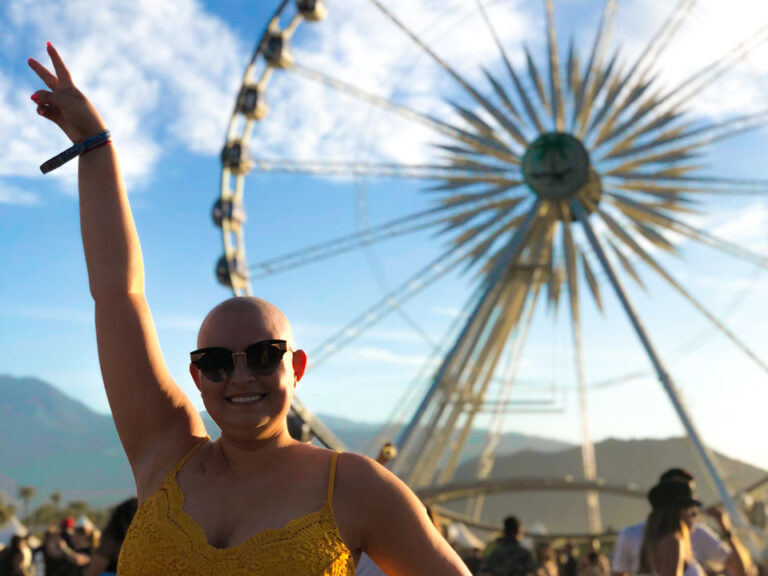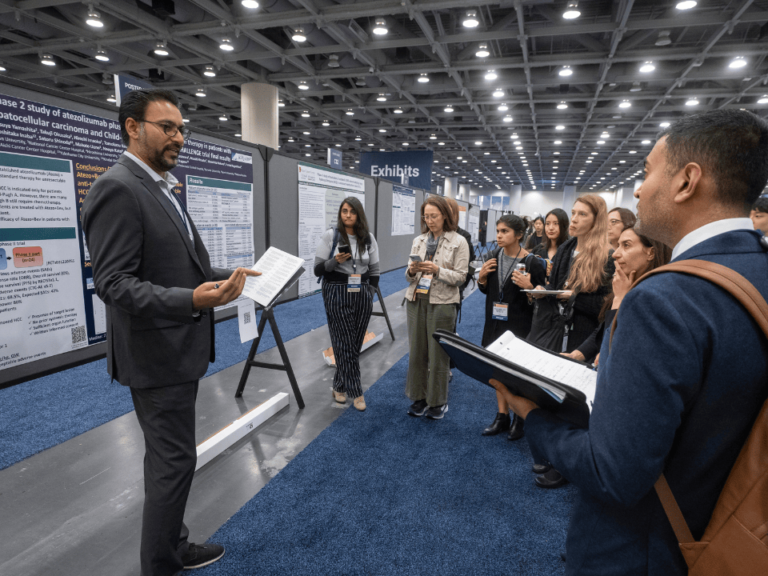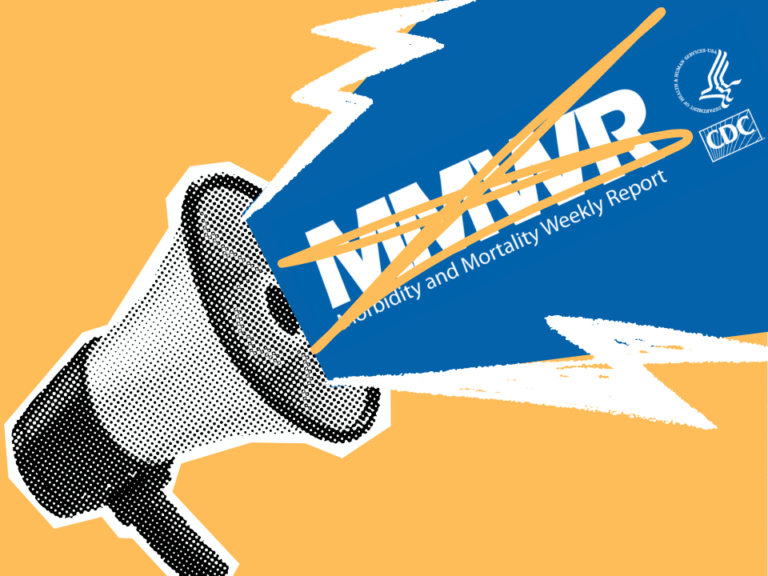The decision by the American Society of Clinical Oncology to venture into the business of Big Data was inspired by the American Recovery and Reinvestment Act of 2009, a law focused on “putting America back to work,” Clifford A. Hudis, ASCO’s CEO said to The Cancer Letter.
The far-reaching economic stimulus measure included massive financial support for conversion of medical records from paper to digital.
Some of ASCO’s leaders saw opportunities to collect valuable data, create rapid learning systems, improve cancer care—and perhaps even find a new funding stream for the professional society.
“The very simple vision at the beginning was that we would tap into this newly created and rapidly expanding resource, which was the electronic record systems, that we would bring all that data in, and we would be able to consolidate it, and then explore it to accelerate learning and to help our members and our broad community to recognize opportunities to more rapidly increase the quality of care they delivered,” Clifford A. Hudis, ASCO’s CEO said to The Cancer Letter.
The proposal that would become CancerLinQ, a real-world data and quality of care technology service, triggered extensive discussions aimed at assessing the project’s feasibility, its technical features, and its capital needs.
The project began with a small staff, but soon ASCO leadership learned that it needed substantial investment, possibly more than the professional society could justify.
CancerLinQ’s history is that of a non-profit venture that, despite poor capitalization, created a unique resource that a commercial entity might have had difficulty constructing.
“There’s recognition of our mission, and, ultimately, we are the gathering place, if you will, for the stakeholders in the community,” Hudis said. “We were the right catalyst, and what we accomplished over this decade with a really small team and a very modest investment, compared to what the tech industry can do, is nothing short of remarkable.
On Dec. 11, ASCO announced that ConcertAI, a company focused on real-world evidence and generative AI, has acquired CancerLinQ.
A story about the acquisition is available in this special report.
CancerLinQ has a network of more than 100 cancer centers and oncology practices, 10 EMR system integrations, and data from nearly 7 million patient records. Bringing together clinical data from most major electronic medical record systems is one of its unique features.
Hudis spoke with Paul Goldberg, editor and publisher of The Cancer Letter.
Paul Goldberg: This story has the feel of a chapter in the history of cancer informatics. Perhaps we should go way back to how it all began—in 2010, give or take. To put CancerLinQ in context, the planning for it would roughly coincide with the demise of caBIG, the NCI’s grand venture into Big Data.
What was going through the minds of the people at ASCO as they started thinking about CancerLinQ?
Clifford A. Hudis: Let’s rewind the clock to half-a-decade before CancerLinQ was launched.
In my telling, this story begins with the American Recovery and Reinvestment Act of 2009, because, as you recall, in the Recovery Act, there was a huge financial support—billions of dollars—provided for the rapid conversion of medical records from paper to digital.
And you’ll recall as well that there were a couple of overt goals.
One was, of course, simply modernizing medical recordkeeping, but an important related one was interoperability, making it possible for information to be freely transmitted and shared.
And the underlying hope, of course, was that there would be accelerated learnings from all of that, both in terms of conventional drug and product device development, but also real-world learnings.
And more or less contemporaneously with that, there was a then-Institute of Medicine report that described and called for the development of what were termed “rapid learning systems” in medicine in general.
And there were a number of papers back in those days from people we all know describing the framework and visualizing what a rapid learning system would look like.
Around that time, the leadership and board of ASCO took this as an aspirational but an achievable challenge to stand up what we thought were going to be a family of rapid learning systems, i.e. specialty or disease-based ones.
And, of course, for ASCO, that meant taking up the challenge of developing an oncology rapid learning system. Those are the roots of this.
And the very simple vision at the beginning was that we would tap into this newly created and rapidly expanding resource, which was the electronic record systems, that we would bring all that data in, and we would be able to consolidate it, and then explore it to accelerate learning and to help our members and our broad community to recognize opportunities to more rapidly increase the quality of care they delivered.
So, you’re not seeing the link to caBIG and the vacuum it left, which was something that I was seeing at that time—from the outside, of course?
CH: That’s the starting point.
So, caBIG is unrelated?
CH: I don’t know. I’m not an informatician. What I would say is it may well be related to a part of it, and it may well be part of the foundational underpinnings of it all.
And you were on the ASCO board, so you really know.
CH: My first term as a board member began, if I remember correctly, in 2008, in July.
So, you thought the program that became CancerLinQ was a great idea?
CH: This was in the early days, and there were extensive board discussions, including special sessions of the ASCO board of directors in the early days to talk about the project, its projections and what it would take in order to succeed.
That started later than 2008. I was just describing in 2008-2009 the germ of the idea, in the beginning.
It’s important to point out that this was started, or seeded, as a conventional project inside ASCO, with a very small staff of employees assigned to it. So, it was like any other new idea that we might give the go-ahead to.
It was simply another thing that ASCO was doing—with a small staff.
By 2011, it was becoming clear that what we were really describing was a tech or software startup enterprise.
And that triggered a careful consideration of what such an entity would need to succeed. And in short form, one of the things we recognized was that it needed to have a degree of independence and flexibility that wouldn’t be typical of a project inside of a big organization like ASCO.
And so, in that era, we had external consultants, and that’s when we had many, many ad hoc board meetings and discussions. And then again, I don’t remember the exact timing at this point, but more or less by 2013, we had launched a limited liability corporation CancerLinQ LLC.
And we had spun it up as another wholly-owned subsidiary. As an LLC, it had a single member—ASCO, but it was given quasi-independence, so that it could act like a tech company—hire, expand, raise money. Whatever it needed to do within the context of ASCO’s ownership, it had the freedom to do. And that’s when its first external CEO was recruited.
And that’s when the staff probably went through its most rapid phase of growth. And the early challenges were pretty rudimentary.
On the one hand, there was the simple challenge of getting data onboard from medical record systems.
And this is a point of departure for us, because serving the broad ASCO membership, at least within the United States, meant that we had to develop uniquely, at the beginning, the capacity to onboard data from multiple versions of multiple medical record systems across our broad ecosystem.
And that was a very distinct challenge. You probably covered that.
If you go back and look, we’ve always talked about that, but that touches back on the original funding that I spoke about, because—remember—when I said one of the goals was interoperability, and yet one of the recognitions that we made early on was that there really wasn’t a very good functional interoperability.
My favorite anecdote about this, which I’ve been repeating for a decade, is this, around about 2013 or 2014—somewhere in there—there was a point when we were onboarding data from, I think it was eight medical record systems.
We had our first thousands of patients coming in, and already at that point, we had discovered that the simple laboratory value of white blood cell count, which every doctor gets in most patients at some point, was shockingly inconsistently recorded.
With reporting of white blood cell counts from just eight medical record systems at whatever number of sites we were up to at that point, we saw more than 60 different ways of reporting it.
And so, that’s just the simplest example of the vast technical challenges we faced from the beginning. We had to transform each of the different versions of that common data element into a single format to put it into a single standard database for exploration.
Now you have to go all the way down the rest of the CBC, all the way down, all the rest of the other standard laboratory values.
And then you have to start to think about the broader data sets that aren’t so standardized even. And I mean prose in the SOAP notes, and all that.
And I’m not describing the solutions here. I’m just pointing out to you that we bit off a very big challenge, and we learned as we went on, and we had to write and rewrite code continuously, because, of course, every upgrade of a medical record system, even things that seemingly are unrelated, always ran the risk of breaking some conversion code that we had generated.
And I’m not a technician, so honestly, Paul, that’s about as deep as I can tell it.
It’s one of those things that if you don’t think much about it, then you don’t realize what a vast technical challenge we took on.
This is really helpful. It’s nice to establish the magnitude of the challenge you were facing. What about the initial costs? In our real-time coverage we used the numbers that ASCO must have given us—because there’s no way we could have gotten them otherwise. ASCO was spending $15 million a year, roughly, for the first five years, which is about $80 million.
CH: I don’t remember the numbers exactly, and at this point it’s water under the bridge.
I do want to say one more thing just as part of the intro.
There are really two key points that I think we never lost sight of and that are the reason that today we think of this as a success.
Number one, we did all this to drive the quality agenda. This enterprise was launched to enable us to use this data to help doctors deliver higher quality care. I described that to you before, and I think you’re going to hear much more about that and, specifically, how this transaction accelerates that, and even with the conversion, obviously, of ownership.
Let me interrupt you, though, because it was my next question. In our first conversation about CancerLinQ, which was in 2013, you said that this is not purely a business venture, but it is a mission venture. It’s a strategic venture. Did that ever change?
CH: No. That was exactly right. And that leads to the second smaller point I wanted to make.
We saw our role as a tax-exempt organization with expertise and leadership in this area that we had a responsibility to try to shape the broader ecosystem productively.
So, as you think about a new field, it is like discovering a new planet, and you have to decide, what’s the governance going to be? How are you going to responsibly utilize its resources?
We had a little bit of pride, maybe overstated, in our ability, believing that just by participating we would help shape this marketplace to the benefit of patients.
Well, do you think that this could have been done without ASCO? Would it have happened? Not necessarily the exact same thing as CancerLinQ, but something that functions the same way.
CH: I think it could have been done without ASCO—sure.
That’s part of the ambition here. I think we stretched pretty far outside of our usual comfort zone in trying to do this.
Do I think it could have been as successful or as impactful or as large?
I think those are fair questions, and I wouldn’t know, but I would never say that only we could do this.
The one thing I would say is that, in a sense, only we or somebody like us could do it exactly this way, which was to stand up a tax-exempt organization to do this, one that’s owned by the physician users.
I keep coming back to that, the lesson of caBIG, where NCI said, “Give us all your data and we will give you some tools,” which, as it happened, did not work. In that case, the lesson learned was that the government had no business in this, but we wouldn’t have known it otherwise. The industry stepped in and just did all the things that needed to be done.
CH: And I would also say we may have had a little bit of an innate advantage, because, of course, we had products that depend on the data. So, it’s a little bit of a self-justifying ecosystem.
And I’ll be very specific, what I mean of course is our Quality Oncology Practice Initiative.
That’s an ASCO program, but it depends on submitting data quality metrics that rely on data to generate numerators and denominators—all of which is extracted from the medical records.
So, to the degree that we could build some of that extraction into CancerLinQ ultimately, and ease the participation expense for practices in their QOPI certification, that was an innate advantage for us. And indeed that led to the SmartLinQ platform of tools that are in CancerLinQ today.
That means that perhaps there wouldn’t have been as much buy-in, had it been industry or the government.
CH: They might have come to us. You’re asking for speculation with a lot of variables. I would never say never to anything.
But the institutions and practices were giving you data.
CH: And they were getting value out of that.
So, they were getting something out of that. Basically, it might’ve been easier for ASCO to set up that kind of an arrangement than it would’ve been for industry, I think.
CH: I think that, of course, there’s a high degree of trust. There’s recognition of our mission, and, ultimately, we are the gathering place, if you will, for the stakeholders in the community. So, to your point, we again have an innate advantage in launching this. I think that’s true.
We were the right catalyst, and what we accomplished over this decade with a really small team and a very modest investment, compared to what the tech industry can do, is nothing short of remarkable.
When did you start looking for investors? It must have been 2017, or was it earlier? When did you realize you couldn’t do it alone?
CH: After we started this, we later came to realize that the challenges I’ve just described required financial resources, and we couldn’t generate those exclusively with our traditional model at ASCO in terms of revenue and margin-generation.
So, it became apparent that in order for this to be sustainable, even with tolerable losses, somebody had to be able to see financial value in what we were generating.
We keep the relationship, and the most important thing for us, of course, is the access to this increasingly valuable resource, meaning the data as it grows and is enriched. And then, the other thing is, we get to now see accelerated impact. The mission is not changing here. That’s the nice thing about this.
That led us to begin to look at the obvious customers for data analytics. And we also quickly came to recognize that this was not a space in which we would choose to be operating as a tax-exempt organization for a number of reasons.
And so, that in turn, led to what I think you’re referring to in 2017, which was this license arrangement with two external parties, one being Tempus and the other being Precision Health AI [predecessor company of ConcertAI].
The arrangement has been described before, but it boils down to something very simple: First—they had a time-limited license to utilize the deidentified data, and for that they paid us a fee.
The second thing is they provided to us the increasingly expensive curation services that were necessary for our quality program and potential research projects.
They honored their commitments. They paid us fees. They made it possible for something very important from our point of view, which was they made it possible for the tax-exempt organization to continue to operate and steward CancerLinQ independently and continue to focus on its primary mission of improving quality of care.
But independence is an important point, Paul, because, frankly, from those early days, we were already fending off proposals for a complete takeover of it, and we were at the time very committed to maintaining its independence.
So, what changed?
CH: Well, we go a decade, or almost a decade, beyond those early years.
What I would say is we have learned a lot and begun to see some of the long-term potential of this data. And we’ve come to recognize that it requires resources and expertise that exceed what we could deliver in order to grow into its next phase of success.
Do you have any numbers you can share? How much do you think something like this requires?
CH: I don’t have numbers for that, and I don’t know how the investment will be apportioned in the years to come. That’ll be obviously up to the new owners.
But the one thing I can say about them is, number one, they share the commitment to improving quality of care, and they recognize that that’s necessary for this to succeed.
And the second issue is they bring remarkable and broad experience and success across other areas of medicine that I think could be helpful.
Let me say that in a different way: it’s possible that what they will need to invest is different from what we would’ve thought. I don’t know.
Yeah, I think $250 million is the number they’re using in the press release.
CH: Okay. It’s not shocking. I just don’t know.
No, it’s not shocking at all. But, basically, at what point did you make the decision to sell?
CH: Slowly, we make the decision, because we and our successive boards are always driven by mission. And let’s face it, we are oncologists, so we have a lot of hope that things will go well!
I would say that this was a slow and steady recognition by a series of boards and leadership that this would be the right move
And the timeframe? Roughly 2020?
CH: It took a few years to come to this conclusion. There’s no inflection point. It was a gradual realization.
When did the process aimed at selling CancerLinQ begin?
CH: The way we got to this point was by first getting to the recognition that we needed more resources, and that led to the consideration of inviting external investors to partner with us in a minority position.
And that led, ultimately, to the learning that wasn’t quite as appealing to the market as we would’ve hoped. And on top of that, we had COVID, and a new era, I would say, of financial uncertainty.
And then we came to the conclusion that we probably had reached the upper limits of what we were capable of achieving as the owner operator for this.
And then you decided to start the process?
CH: Yes. We engaged an investment bank with deep knowledge of this space and technology and they developed and ran an open competitive bidding process through the summer and fall of 2023.
But it’s important to point out, this is not like we are turning over the keys and walking away.
We are engaged now and for the future in a cooperation agreement, and we have plans to rely upon access to this data for years to come. We think that this is a hugely promising area, and we need to have access to it for the benefit of our members and community.
We just want to see CancerLinQ resourced for success.
So, the cooperation agreement is that [ConcertAI] pays you for working with them; right?
CH: Yes.
Okay. So that goes on for 10 years? Or 5 years.
CH: It starts off time-limited, and it’s extendable.
What happens with the people who are providing the data—the practices, the institutions? Will they keep providing the data now that it’s a for-profit, as opposed to ASCO?
CH: I hope so, because I think that their experience—the value they perceive from their engagement—is going to become a better one. I don’t want to speak for whatever ConcertAI may choose to do with CancerLinQ, but I think that the quality of the services that they receive should rapidly improve.
What are the services they will be receiving?
CH: Well, I think it’s in two broad categories to start with.
One is the quality tools, which they are very committed to enhancing. That’s, actually, an important part of this deal for them, and it’s important for us. So, that’s the on-ramp to the currently existing QOPI certification program, but it’s also in the near-term future, the on-ramp potentially to the ASCO-certified program that we launched this year, which is a broader tool for navigating the transition to value-based care.
That’s one broad area. And the second is that ConcertAI brings a clinical trials matching tool into this, which I understand they intend to launch pretty quickly into this network. Clinical trials matching tools—that’s been one of the dreams for us at CancerLinQ and accelerating its availability is an exciting opportunity to provide a tool like that.
These are examples of the synergies that come immediately to bear.
What about the rapid learning system that was a dream that you and ASCO had in the beginning? Did that ever materialize?
CH: I think the answer to that is not in the original form that we thought of, which was sort of amorphous and would allow somebody to explore almost anything and everything randomly.
But I do think we are already gaining some of the benefits of it. Again, the example is pooling data to identify gaps in knowledge, and then providing tools to practices to improve that. So, I think we’ve operationalized parts of the rapid learning system already, and we hope to see more of that.
What about the process that you used for selling? How did you do that?
CH: That’s a really important question, of course.
We had a number of a priori goals. The first was that the acquisition would expand on and accelerate the delivery of the mission. That was the most important thing to us.
The second issue was, in a sense, the ability of the buyer to actually close the deal and execute the acquisition. And that can sound a little bit peculiar, but there’s a lot of people with a lot of ideas out there, but they have to have the resources to make it work, and we wanted to be confident that they’d be able to shepherd CancerLinQ into its next phase of success.
The third issue for us was timing.
We were at the point where we were interested in having this done on the faster side once we were clear what we wanted to do, and I suppose I may have covered this already, but the technical ability of the acquirer to actually maintain and manage the network and the enterprise was really important to us.
Finally, having tried to do this a couple of ways, as we already discussed in the past few years, we went out to a commercial investment bank. We actually interviewed several, as one would, and we selected the one, interestingly, that seemed at the outset to know us best already as they had been tracking this business.
They knew the space, and they knew the other businesses in it, and they were remarkably helpful in the process.
They cast a much wider net, I think, than we might’ve generated on our own. They ran an open and transparent competitive bidding process, what they would call an auction, and I will say, without getting into details, it was absolutely an open process.
So much so that there were twists and turns and changes in what we thought was going to be the ultimate outcome right up through the last four, five, six weeks.
How many bidders did you have?
CH: It started with a large number, dozens and dozens of entities that were of course interested in it. And it was narrowed to a smaller group that expressed serious intent and a willingness to put in letters of intent, and it was narrowed to an even smaller number that we could manage through the final period of negotiation.
And then down to a final three. And then from then we got to the final one.
And the money came out well? Can you tell me about it?
CH: The money’s not that important in this transaction and the specifics are confidential. That said, what we are receiving right now defrays some of our years of investment.
The most important thing for us was that the enterprise would have the resources it needs to succeed, and that therefore what we have put into it over the decade wouldn’t go to waste.
Well, and was it worth it?
CH: Yes! We created an enduring tool and resources and we helped shape a nascent environment!
What do you keep in this relationship with ConcertAI?
CH: We keep the relationship, and the most important thing for us, of course, is the access to this increasingly valuable resource, meaning the data as it grows and is enriched. And then, the other thing is, we get to now see accelerated impact. The mission is not changing here. That’s the nice thing about this.
It is also worth noting that this transaction is not something we or others would do every day. This is a very unconventional transaction, by which I mean the transfer of an entity built in the not-for-profit space to a for-profit company—maintaining its mission.
Right. Knowing what you know now, after 15 years of this journey, would you have done it again?
CH: Today, I’m high on this, because from the present vantage point, we would say this has been a success that allowed us to accomplish our goals.
We built a unique resource that will help improve cancer care for years to come, and we for sure have had influence on the evolution of the broader market and environment that was going to develop with or without us.
So, my answer is yes.
What’s happening to the CancerLinQ staff?
CH: There are just over 50 employees at CancerLinQ, and our understanding is that they all received offer letters from the new owners.
Is there anything I forgot to ask? Anything you can add?
CH: Having gotten to this point, we are excited now to see where this is going to go, and we’re very excited to see how this is going to benefit the practices and the patients in CancerLinQ and even beyond it in the years ahead.
Thank you.












